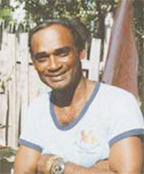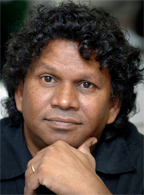Literature and the post-independence Guyanese society remains a topic of some interest and significance. It is still important and worthwhile to analyse some features that shaped the literature and some important features that emerged in the more than 40 years of the post-independence period. However, the contemporary literature is wide, varied and difficult to organise in the usual sweeping generalisations. Talk of independence Guyanese literature is very often a cliché, but there are areas of specific development and a few significant factors worth documenting.
These include the rise of East Indian writing, the factors of nationalism, republicanism, writing out of the Amerindian ethos and the fiction and poetry of Guyanese politics that emerged after the 1980s.
There was a sense of being a people with a literature that was evident in the euphoria just after independence. It was a part of the nationalism that was growing before independence, which was more important and deepened with the spirit of republicanism that followed.
Republicanism itself also brought with it an element of ideology that affected the literature with mixed results. The National History and Arts Council produced independence anthologies which were important for documenting and showcasing local writing as well as for the boost it gave to the writers.
Particularly in the early part of the 1970s writing groups emerged, such as one associated with the University of Guyana out of which Jan Lo Shinebourne emerged to become a major Guyanese novelist. In addition there was the Annandale Writers group which produced another prominent fiction writer and poet Rooplall Monar. Poet Shana Yardan rose to prominence and Syble Douglas was instrumental in Guyanese independence poetry. While AJ Seymour and Sheik Sadeek led workshops for the Department of Culture, there were other groups. These included the National Service of great potential and notoriety in equal proportions with which Rajkumari Singh was associated, and out of which her protégé Mahadai Das developed. Yet another writers’ group led by local novelist Roopnandan Singh functioned much later.
The literature solidified in its development as it diversified, served considerably by the foremost writers at home led by Martin Carter and also including Ian McDonald and Monar.

At the same time most of this growth and diversification began to take place among the increasing numbers of Guyanese writers overseas. Some of them were already among the most important artists who contributed to the ascendancy of West Indian literature in Britain, such as Wilson Harris, Roy Heath, Beryl Gilroy and Milton Williams. Others have been a part of newer developments and include Mark McWatt from his base in Barbados and Cyril Dabydeen in Canada as well as those who are among the foremost writers in the UK, David Dabydeen, Fred D’Aguiar, Pauline Melville, John Agard and Grace Nichols.
These and many more specific areas are large and important studies, as is the work, mainly fiction and fine arts, that began to highlight the Amerindian ethos. However, the factor in Guyanese literature after independence that will occupy the remainder of this survey is also of ethnic importance: the rise of East Indian writing.
It is easy to provide a checklist of Guyanese Indian writers, but that is of less importance than other subjects relevant to the literature. This is so for a number of reasons. Many of these writers happen to be East Indian but their work does not focus on anything of ethnic significance. Their concerns lie elsewhere, and this has been the case with some who are among the major producers of contemporary Guyanese literature. David Dabydeen is one of these, as is Cyril Dabydeen and leading poet Mahadai Das, who have written works on Indian themes, but whose major preoccupations have included the African experience including slavery in the Caribbean and in Britain, particularly seen in the novels and poetry of David Dabydeen. In this category also are Jan Shinebourne (half Indian) in the UK and others who wrote at home like Shana Yardan (also mixed race), Rajkumari Singh and Roopnandan Singh.

The rise of Guyanese Indian literature may go back to CEJ Ramcharitar-Lalla who edited the ground-breaking An Anthology of Local Indian Verse in 1934. This collection is very important for being the first of its kind and a priceless document of not only verse by Indians at that time, but the state of British Guianese verse. It was a complement to NE Cameron’s anthology of Guianese poetry from 1831-1931, published three years earlier, and provides some of what is missing from Cameron’s collection. However, Ramcharitar-Lalla’s anthology is a record of verse by Guyanese Indians, not of Guyanese Indian verse, and that is one of the reasons why it is less meaningful to examine the literature based purely on the ethnicity of the writers. The book includes both Ruhomon brothers Joseph and Peter, among others, and demonstrates the kind of imitative colonial verse that was in vogue among many Guyanese poets of whatever ethnicity.
The poems contain little or nothing about Guyana or the Guyanese Indian experience. There is a poem called Albion, exciting expectation of something about a village on the Corentyne. But the verse betrays no such local content and reminds one more of the fact that England was once called Albion in archaic poetic language. Yet the document is priceless as a record of what was being written.
One poem by Ramcharitar-Lalla himself stands out: The Weeding Gang, the only one about real Indian life in the country. A similar limitation may be seen years later in AJ Seymour’s collection in Kyk-Over-Al in 1954 which includes Indian writers. The work of JW Chinapen represents an outstanding Indian name, but little of interest where Guyanese Indian poetry is concerned.
What is far more important about the rise of Indian Guyanese literature is a study of work that takes us into the Indian ethos, the Indian experience and its history with a bit more depth. This might have been pioneered by Joseph Ruhomon who authored the first publication by an Indian in the colony. India: The Progress of Her People Abroad and How Those in British Guiana May Improve Themselves (1894) is concerned with an Indian Motherland and dissatisfaction with “her people” in the colony, but it is the beginning of Indian intellectualism and cultural consciousness, setting the tone for a development of Indian identity, culture and preoccupations. These were followed by the similar concerns of Peter Ruhomon, who led the East Indian Young Men’s Society (EIYMS), one of the cultural organisations set up around that time. Others were the Hindoo Society and the British Guiana Dramatic Society.
To this may be added another poem by CEJ Ramcharitar-Lalla dedicated to a prominent Indian, Lalla Rajpat Rai. This literature provides insights into the way the writing developed through imitation, a looking across to Mother India, a deepening cultural consciousness before it began to concern itself with Indian life and ethos in Guyana. The early cultural resurgence shaped consciousness and contributed to the literature that was to come. One of those who pushed it forward was Sheik Sadeek whose plays, novel and short stories after independence went to the roots of the estates, the villages and the city of Georgetown.
This was to be followed in the 1980s by the work of Rooplall Monar whose best fiction are excellent studies of the local Indian experience in Backdam People and Janjhat as well as Arnold Itwaroo’s novel Shanti. During and after the 1990s this literature escalated and diversified into several different concerns articulated by several different writers. Moses Nagamootoo explores the creation of a landscape and a heritage in Guyana by the Madrassi in his novel Hendree’s Cure, while Clive Sankardyall goes into race and migration in The Brown Curtains set among Guyanese teachers in St Lucia. Its importance lies in the way it tackles the troublesome interaction and ethno-cultural conflicts concerning Guyanese Indians in the island’s creole society. Also it continues what many writers only began to treat in the 1990s – migration out of Guyana and the politics of subterfuge in the 1970s and 1980s.
After independence it took a few decades before Indian writers began to exorcise the problematic conflicts of race in the early sixties and the other issues of race and politics in the 1980s. Harischandra Khemraj’s Cosmic Dance is among the best examples of this, more important because it also delves a bit deeper into the Indian ethos from other angles as well. Another very good example of writers delving in the depth of Indian culture, traditions and religion is the work of a major poet Sasenarine Persaud with his interest in Vedic scholarship and in the Hindu mythology. Persaud first joined those writers who sought a kind of purging of racial politics, but he is a bitter poet when he goes into those subjects and a better poet when he steers clear of them.
Indian Guyanese literature in the 21st century is no different from Guyanese literature in general in the sense that it is dangerous and misleading to generalise about it. Celebrated writers like the younger Dabydeen who is among the best in Britain, has produced ‘Indian’ work like Coolie Odyssey and The Counting House but has major preoccupations that explore far beyond those. His novels move from the history of the black experience in England, African Caribbean slavery, cultural disappearance to his Guyanese background and its connection to the society of England and the post-colonial world.
Poet Ely Niland reflects the life in Britain among a variety of other interests, much like Mahadai Das whose concerns are equally varied. New playwright Sharda Shakti Singh analyses tradition and acculturation in the New York Guyanese Indian community. There is no uniformity of theme, subject or style, and there is nothing gained by trying to fit it into any single or neat definition of something called Guyanese Indian literature.





